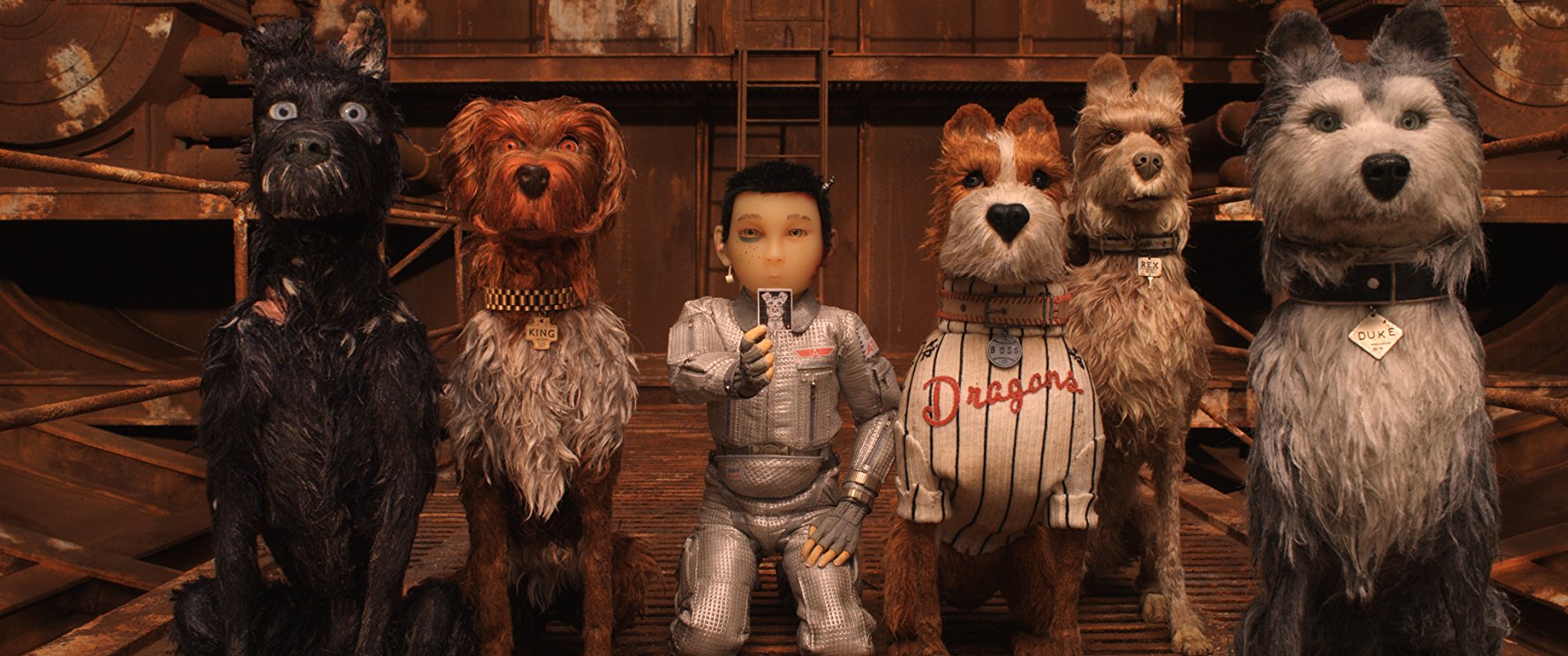
Isle of Dogs, directed by Wes Anderson, showcases a culmination of his progressively focused and detailed filmmaking style. At first glance, one might assume this animated film follows a generic storyline. Under the masterful direction of Wes Anderson, this tale transcends all expectations, blending various elements with finesse and allure.
Comedy, drama, suspense, adventure, fantasy, and sci-fi seamlessly intertwine, creating a dynamic and compelling narrative that keeps audiences on the edge of their seats. Anderson expertly maintains a cohesive flow, crafting an atmospheric experience that traverses different moods while effortlessly weaving multiple genres into the fabric of the film.
Isle of Dogs delivers a powerful moral lesson, emphasizing the treatment of dogs and the preservation of the past instead of mindlessly embracing the new. Every frame bursts with creativity and depth making this cinematic endeavor groundbreaking and memorable. Read how in our Isle of Dogs review!
Isle of Dogs (2009)
Production Company: Indian Paintbrush, American Empirical Pictures, Studio Babelsberg
Distributor: Fox Searchlight Pictures
Director: Wes Anderson
Release Date: March 23, 2018

Megasaki City is an alternate vision of Japan where Mayor Kobayashi enacts a drastic decree to banish all flu-infected dogs to the forsaken island known as “Trash Island.” This desolate, grey landscape becomes the home of abandoned and discarded objects, transforming into a dangerous and unpleasant environment.
Amidst this backdrop, a 12-year-old boy named Atari Kobayashi embarks on a daring journey to locate his loyal bodyguard-dog, Spots, (Liev Schreiber). Assisted by a pack of five other remarkable dogs—Chief (Bryan Cranston), Boss (Bill Murray), Duke (Jeff Goldblum), Rex (Edward Norton), and King (Bob Balaban)—Atari ventures into the unknown in pursuit of his beloved companion.
The star-studded voice cast delivers exceptional performances. The plot incorporates intriguing twists and surprises while conveying significant messages and themes for viewers to contemplate. It is a rare kind of wholesome film that also respects the viewer’s intelligence.

At the heart of the film lies genuine emotion that resonates with anyone who cherishes the companionship of dogs. Moments of heartfelt connection are deftly balanced with humor, revealing Anderson’s ability to appeal to general audience sensibilities.
Only the dog characters “speak” English, while there are only two human characters who also speak English. Dialogue for all other human characters is in Japanese to best put the viewer in the position of the dogs who don’t truly understand what is being said.
The film takes daring leaps, veering into unexpected territory, where moments of graphic intensity and mature themes push the boundaries of the PG rating. This audacious approach transforms the film into a compelling experience for adult audiences while retaining its charm for families.

From a filmmaking perspective, Isle of Dogs excels on multiple fronts. The characters, despite mostly being dogs, are well-rounded and relatable. The storytelling approach is refreshingly unique, and the seamless integration of humor with the narrative and visuals enhances the overall experience.
With a runtime of one hour and 40 minutes, the film maintains a captivating pace, consistently engrossing the audience. The stop-motion animation is executed with great skill, beautifully contrasting with Japanese imagery. The sets are especially impressive with their granular detail and verisimilitude.
The soundtrack further enriches the storytelling, and Anderson’s evident passion for Japanese cinema, especially Akira Kurosawa’s films, is evident through numerous nods. Cinematography has Anderson’s signature artifice and blends nicely with Kurosawa’s panache for sweeping wide angles.

Isle of Dogs offers substantial rewards upon repeated viewings, as its meticulous attention to detail becomes apparent in every frame. The abundance of visual elements allows for a rich and absorbing experience.
Wes Anderson’s distinct and easily recognizable style sets him apart as a filmmaker of exceptional vision. Just saying his name, most cinema fans will easily conjure mental images of locked camera positions, warm color pallets, and focused symmetry.

The animation, as expected, is visually stunning. Each frame is exquisitely crafted, capturing the audience’s attention with its beauty. Unlike the warm cinematography of Fantastic Mr. Fox, Isle of Dogs adopts a bleaker, more cynical texture. Sometimes you think you can smell the garbage on Trash Island.
The animation effectively conveys the characters’ emotions through meticulously animated facial expressions, while the movement of the dogs’ hair and other details make Isle of Dogs feel handcrafted. There are some weighty and emotional close-ups of some dogs and the pathos and emotion on their expression is palpable.

For enthusiasts of dogs, Japanese cinema, and culture, as well as stop-motion and animation enthusiasts, Isle of Dogs is a must-see. Isle of Dogs showcases Wes Anderson’s unfiltered creative prowess, pushing the boundaries of his abilities and delivering something truly original.
Isle of Dogs was reviewed with a Blu-Ray copy purchased by Niche Gamer. You can find additional information about Niche Gamer’s review/ethics policy here. Isle of Dogs is now available via streaming on Disney Plus and on DVD and Blu-Ray.